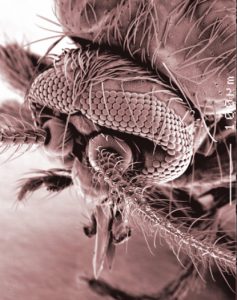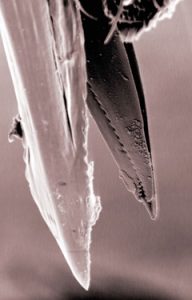8 The Contented Insect: Feeding and Nutrition
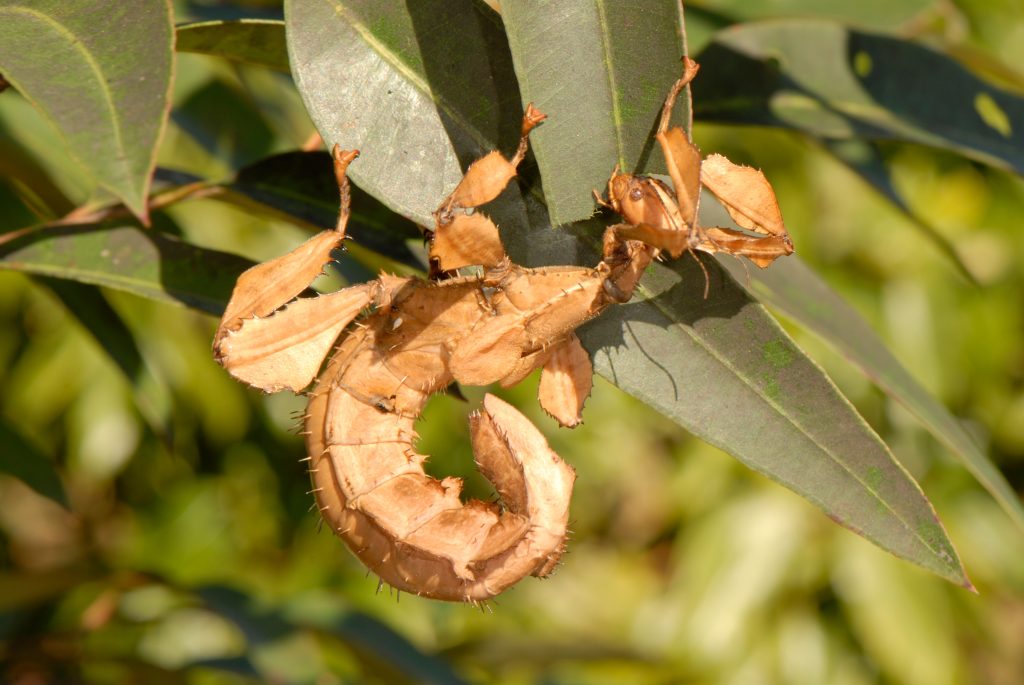
One of the reasons insects are so important to humans is that they can be major pests or important beneficial species. These roles pivot around insects’ feeding habits. We identify the diversity of feeding strategies used by insects and take a closer look at chewing insects.
THRD0023 025 (YouTube, 4m 50s):
Learning Objectives
- explain how the diversity of food types impacts on the structure of the mouthparts and the gut
- appreciate the roe of plant-derived chemicals in initiating and deterring feeding by insects
Mouthparts and Feeding
As a general rule, insects’ mouthparts possess adaptations that are appropriate for their feeding strategy. The obvious examples are the possession of stout mandibles in plant feeders or siphon-like mouthparts in sap-sucking bugs. However, there are evolutionary constraints on the diversity of feeding habits within each order. Let’s compare three widespread and successful orders as an example. Flies have a characteristic groundplan for the mouthparts, as do beetles and bugs. Each groundplan is different to the others. The fly groundplan is based on nectar or liquid feeding, the beetle groundplan on chewing and the bug groundplan on plant-sucking. Each of these orders has diversified, producing many different species that have explored different foods but they must each evolve from their own peculiar groundplan.
The adults of Diptera are pre-adapted for feeding on liquids. It is perhaps not surprising that a number of families have settled on blood-feeding as a successful strategy; blood provides protein as well as carbohydrates. To draw blood, the fly needs to be able to pierce the skin so we see adaptations of the mouthpart appendages such as serrations or hooks to enable them to pierce the epidermis and hold the mouthparts in place. Mosquitoes, biting midges and tabanids (horse or march flies) have all independently modified the dipteran groundplan to enable them to exploit blood-sucking.
Images above: Scanning electron micrographs of (left) a female biting midge: a bloodsucker (Diptera: Forcipomyia (Lasiohelea) townsvillensis). Note the blade-like mouthparts with serrated edges for cutting into skin (right) [Images: BW Cribb © University of Queensland, shared under a CC BY-NC SA 4.0 licence].
Plants are thought to have developed strategies to discourage feeding by herbivores over evolutionary time by producing feeding deterrents. However insects counter this by evolving tolerance and in some cases specialising on certain plant types. They can even metabolically neutralise the plant’s compounds and turn the table on the plant by using the anti-feedant chemicals to help find the plant. As an example, milkweed is the food plant of the Monarch (or Wanderer) butterfly (Danaus plexippus). Milkweed is named for its milky juice, which contains alkaloids, latex, and other compounds including toxic cardenolides. Latex is a physical barrier to feeding while the cardenolides are chemical deterrents/toxins. Monarch caterpillars are specialized to feed on milkweed despite the chemical defences present. The caterpillars have developed strategies to deal with the plant toxins. In fact, both larva and adults incorporate the cardiac glycosides into their tissue. These then protect it against predation. Birds learn to associate the distaste with the aposematic colouration of the caterpillars and thereafter avoid feeding on the caterpillars.
In this video, the milky sap can be seen oozing from the plant as the caterpillar begins feeding. (Video: Myron Zalucki © University of Queensland, shared under a CC BY-NC SA 4.0 licence):
Different foods require different processing systems. Insects’ food varies from liquid to solid, and plant-derived to animal-derived. The structure of the mouthparts and the gut frequently reflect adaptations that facilitate consumption of their the particular food type.
THRD0023 026 (YouTube, 3m 22s):
Solid Diets
Insects ingesting solid food with low nutrient value typically have a straight, wide gut so that they can process a large volume over a short period. Strong grinding or cutting mandibles are required to macerate the food.
very watery diets (sap, blood)
Such insects are faced with the challenge of extracting nutrient and getting rid of the excess water. The gut of bugs (Hemiptera) is highly convoluted, wrapping around itself to create a “filter chamber” that allows direct extraction of liquid into the hindgut for excretion. Blood-sucking insects have extremely specialised diets that require rapid elimination of excess water.
Cellulose
Some insects use symbionts to provide enzymes to break down ingested food e.g. termites cannot digest cellulose in wood without gut symbionts.
Gut Morphology
The gut, also called alimentary canal, is divided into three parts the foregut, midgut and hindgut. The fore- and hindguts are cuticle-lined.
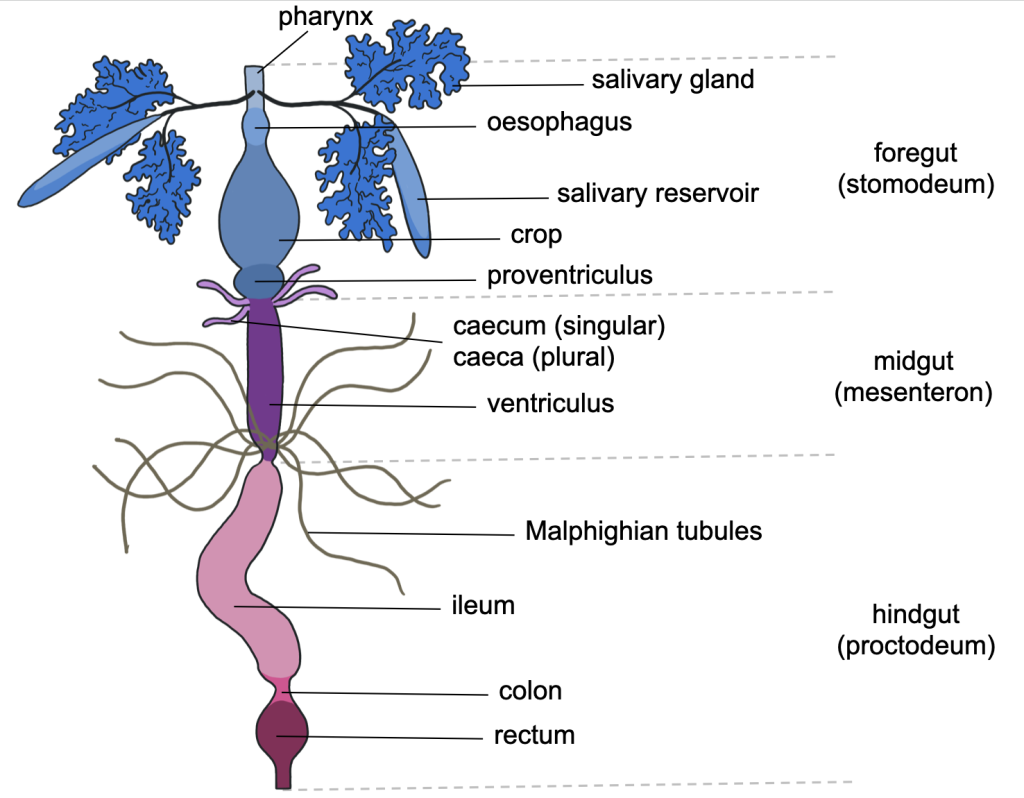
| Sections of the gut | components | functions |
|---|---|---|
| foregut | pharynx, oesophagus, salivary glands & ducts, crop, proventriculus | ingestion, storage, grinding, transport |
| midgut | caeca, ventriculus, peritrophic membrane | digestion (enzymes), absorption of digested products, seiving our small food molecules ready for absorption |
| hindgut | malphighian tubules, ileum, colon, rectum | absorptions of water, salts and other valuable neolecules |
Excretory System
Excretion is linked to food intake and digestion. The main excretory system of insects is the Malpighian tubules.
They are found at the junction of midgut and hindgut. The distal portion removes nitrogenous waste (usually uric acid), salts and water from blood (more correctly called haemolymph) and deposits them in the hindgut.
The hindgut then voids solid waste (insect faecal pellets are called frass), excess salt and water.
The proximal part of malpighian tubules and the hindgut both resorb the proper amount of salt and water required to maintain proper osmolarity of blood. Often insects have structures called rectal papillae that specialise in extracting moisture from the faeces.
Primarily liquid feeders are faced with the challenge of eliminating liquid and separating out the protein and salts, while solid feeders are often faced with the opposite challenge of retaining as much water as possible.
Nutrition
Insects require protein, carbohydrate, lipid and micronutrients just as we do. They have taste and smell receptors (chemoreceptors) which monitor the environment around and in the mouth. Feeding choices are made on the basis of hunger, and quantity of feeding stimulants present versus repellants or substances which inhibit feeding.
A few generalisations can be made:
- Sucrose and fructose are particularly effective in stimulating feeding (there are species differences). The higher the concentration, the bigger the meal taken. Sugars are primarily important in determining the duration of a meal. It appears that insects cannot taste protein but they can taste amino acids.
- Inorganic salts (e.g. sodium chloride: salt), in high enough concentrations, are deterrent but in lower concentrations usually have no effect. For blood feeders, higher concentrations are tolerated.
Sometimes specific substances— called phagostimulants—need to be present along with nutrients to achieve feeding. They may not have a high nutritional value themselves but they are indicators of the correct foodstuff. An example is the flavonoid Morin (found in mulberry leaves) which is a phagostimulant (feeding stimulant) for Bombyx mori (the silkworm larva).
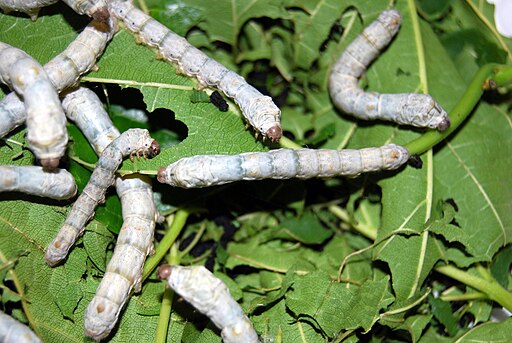
Plants have evolved chemicals to protect themselves from insect feeding. These chemicals are often contained in glandular trichomes, hairlike structures present on plant surfaces. Many plant chemicals such as menthol (mint) are thought to have evolved as a form of plant defense.
Insect Feeding: Its Impact on Humans
To survive, grow and reproduce, insects need to feed. They compete with us for many of the resources we use: agricultural products, building products and clothes. Some insects feed on our livestock and even on us. However, there are examples where insects’ feeding habits are advantageous to us: for example, insects can prey on one another which can help us. Some recycle our waste products while others pollinate plants.
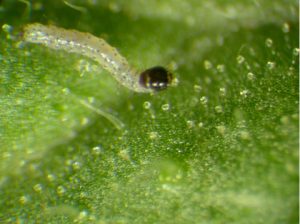
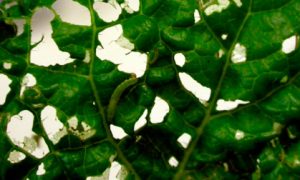
Insects as Food
We eat food prepared by insects, e.g. honey. In African cultures roasted locusts and termites are eaten, and in South East Asia, giant water bugs and other insects are treated as delicacies.
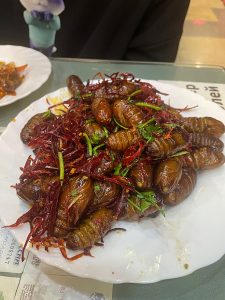
There is a push to use insects as waste-converters, turning waste such as discarded food or agricultural by-products such as animal manure into protein via insects. The black soldier fly Hermetia illucens is spread throughout the world. Its larvae are leathery maggots that efficiently turn waste into protein and lipid. The last instar larva is rich in both these nutrient types and is self-harvesting because, upon maturity, they climb out of the medium they have been feeding on so that they can pupate in the ground. Rearing containers take advantage of this fact to collect mature larvae.
Want to know more about insects as food? Read this report from the Food and Agricultural Organisation of the United Nations (FAO).
And for the keen chefs, here’s some really fun insect food ideas from Brooklyn Bugs!
Activities
Activity 8.1
Watch these videos to see examples of different feeding styles in insects:
- Macro-videos (YouTube, 4m 30s) of different insect feeding behaviours
- Leaf insect feeding (YouTube, 2m 43s)
- Mosquito feeding (YouTube, 3m 17s)
- Assassin bug feeding (YouTube, 2m 31s)
- Butterfly proboscis structure (YouTube, 3m 23s)
- Butterfly proboscis (YouTube, 1m 31s): feeding and puddling
Topic Review
Do you know…?
- the names of the different components of the typical insect gut
- the importance of phagostimulants and feeding deterrents in determining whether or not an insect will feed
- The diversity of feeding habits and the types of adaptations of the gut that suit insects to their food type?
Can you…?
- Draw and label the main components of the insect digestive system?

